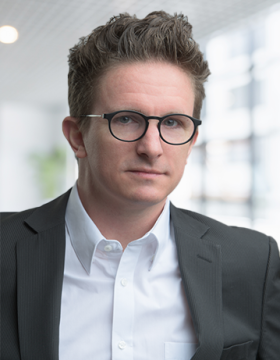 By Gary S. Jackson, Director Consulting Expert, Data Science, CGI
By Gary S. Jackson, Director Consulting Expert, Data Science, CGI
In my previous blog, I walked through how blockchain can get back a trusted baseline of truth. However, as I described there, it requires organizations to believe in sharing.
Sharing becomes easier when the circle is private
When I was a high school freshman, the teacher’s lounge fascinated me. The teacher’s lounge was a place where staff relax before or after class, eat lunch, enjoy coffee and socialize. No students were allowed inside — just teachers.
Then my senior year, my AP English teacher, Mr. White, invited me in. He asked me to come to the lounge to give him my final draft for a short story I had written for class. He had liked my first two drafts and wanted to share the final version with his colleagues. Creating something of value gave me passage into a restricted area. Not only could I enter, I was by default trusted in this circle.
Imagine a teacher’s lounge as a private blockchain
A teacher’s lounge is basically a restricted circle. If someone has allowed you in, I don’t have to know who you are. I trust you by default because you are in the circle.
When the United States started moving into a lockdown mode in response to the first wave of the pandemic, the biggest fear wasn’t the coronavirus getting out—it was that someone could use misinformation to feed a panic. The goal was to keep public safety without having others harmed or halting commerce needed for supply chains. Information in the wrong hands could cause death.
Blockchain to save the day
What if you could share trustworthy information without revealing everything? Have you ever had a close friend tell you something without telling you anything? Such as ask a friend if they like the person you are currently dating and they simply answer, “No. And trust me. They are not good for you.” You have a decision to make: You trust them because of what they have done for you in the past, what they are doing for you now and what they might do for you in the future. Or because of your past experiences with this person – you may not.
But it requires you to see a lineage of past experiences to determine if you trust what they are offering you.
In this example, comparing a conversation about a relationship to a digital asset means on both things, you need total provenance or chain of custody of all assets on a distributed ledger. Blockchain identifies when an asset is created, who is using what, when and for how long – past, present, and potentially future.
Knowing who created an asset, who is using it, and infer where it might be used next – without actually revealing the data would show how much “in demand” it is which might suggest the quality of the asset.
An asset that is being used and connected to other assets x100 (hundred times) versus an asset that is used twice and never connected to anything as you view the distributed ledger of the asset might tell you how trustworthy the data is.
This means blockchain provides complete transparency for its analytics. But it does require a belief in sharing.
Private + Public = Innovation
Opening assets to the public allows for citizen data scientists the opportunity to securely browse, trust the use, and collaborate around public facing digital assets on public chains to create further innovation and solutions. Citizen data scientists could publish findings back on the blockchain as trusted sources for federal, university, and commercial partners to check out within their private blockchains.
The phrase “Data is the new oil” was coined by Clive Humby, a British mathematician in 2006.
Unfortunately, real oil is owned by the very few. And even data as “oil” in its current state is being mined by those few social media services that the world uses and is transformed into applications, algorithms, to further those companies’ futures.
Sharing is the new “oil”
Assets being joined together from private and public blockchains that have been vetted and verified as “true” create opportunity for everyone. It becomes everyone’s commodity. The more it’s used, reused, built on top of, added to, the better it becomes.
Can you trust blockchain?
The business problem of not sharing becomes an opportunity cost for all.
So the question really becomes, can you trust anything shared without it?
